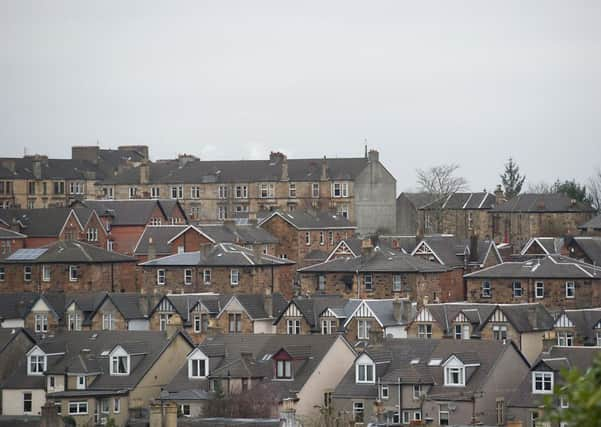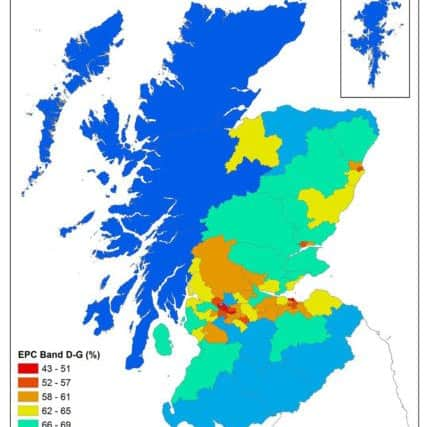Call to rid Scotland of its 1.5 million cold homes by 2025


The Existing Homes Alliance (EHA) released the report which showed an estimated 1,482,000 households were in a “unhealthily cold” home, which is also below the C EPC energy standard.
The National Institute of Health and Care Excellence (NICE) has recommended that properties should be raised to an EPC band C and ideally up to a band B to help reduce the risk of death and ill health associated with living in a cold home., which works out to roughly is 62 per cent of homes in Scotland.
Advertisement
Hide AdAdvertisement
Hide AdThe report also reveals that those living in lower energy band homes are more likely to suffer from fuel poverty.


This data shows that there problem is shown in every parliamentary constituency, with seven having more than 75 per cent of households living in a cold home. These are Na h-Eileanan an Iar; Skye, Lochaber and Badenoch; Caithness, Sutherland and Ross; Shetland Islands; Orkney Islands; Argyll and Bute; Banffshire and Buchan Coast.
There are also only three constituencies in Scotland where more than half of homes have an “acceptable” rating: Glasgow Shettleston; Edinburgh Northern and Leith; Glasgow Anniesland.
Speaking about the figures, Alan Ferguson, chair of the EHA, said: “These figures show that if the next Scottish Government set an objective to bring all homes in Scotland to at least a ‘C’ energy performance standard by 2025, they could end the scourge of cold homes currently affecting thousands of households in every single parliamentary constituency across Scotland.


“Not only did more than 50 business and civil society organisations welcome the cross-party commitment to making improved energy efficiency for Scotland’s homes a National Infrastructure Priority, but the National Institute of Health and Care Excellence suggested a ‘C’ standard is the minimum energy efficiency level to avoid the risk of death and ill-health associated with cold homes.”
Dr Sam Gardner, head of policy at WWF Scotland, who are part of the EHA, said: “Heating Scotland’s buildings accounts for over half of our climate change emissions. Ensuring every home reaches a C Energy performance standard by 2025 is the minimum level of ambition required to allow our climate change targets to be met. A political commitment that no-one should live in a hard-to-heat, draughty home would be good for millions of households, and would drastically reduce emissions too.”
Wilson Shaw, chair of the National Insulation Association in Scotland, added: “A commitment from the next Scottish Government to ensure all homes in Scotland reach a minimum energy efficiency standard could create up to 9,000 jobs a year. Today’s figures show that such a commitment would benefit thousands of households across every single Scottish parliamentary constituency. Few other capital investments could make such a difference, and such a commitment would give the energy efficiency industry the confidence to invest for the longer term.”
